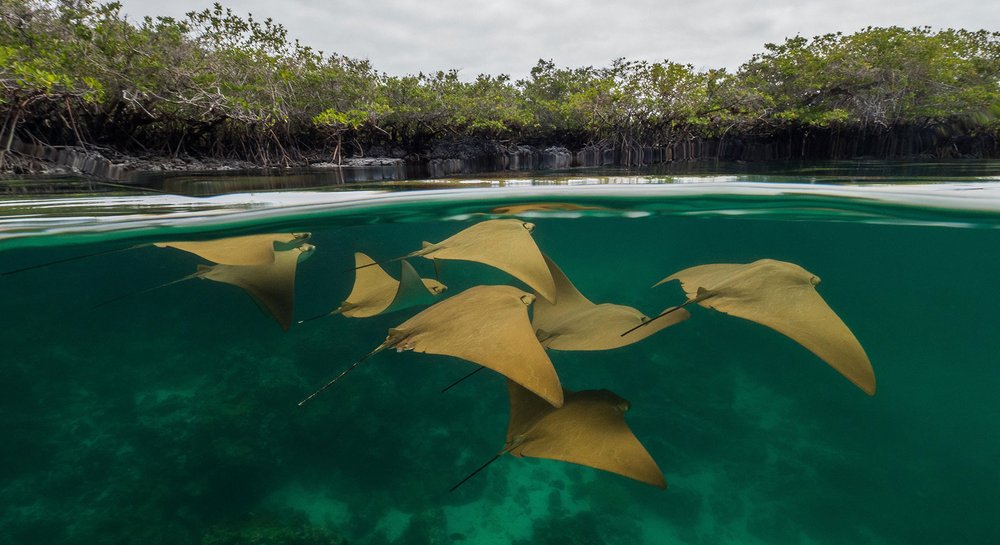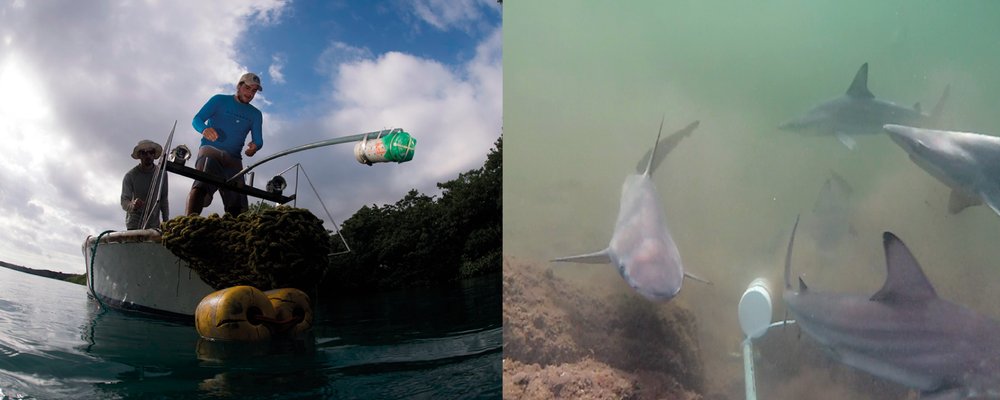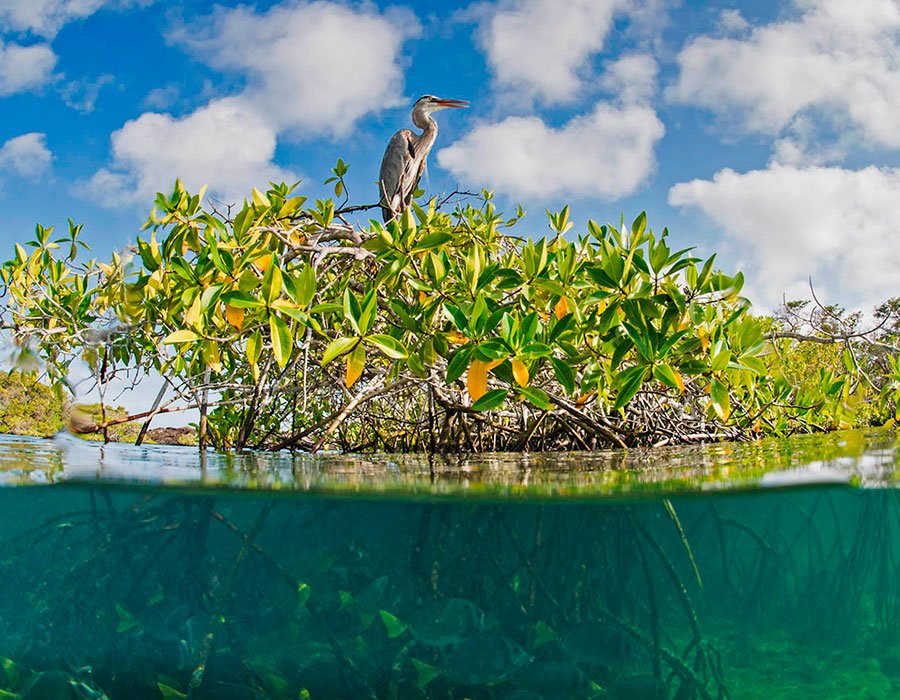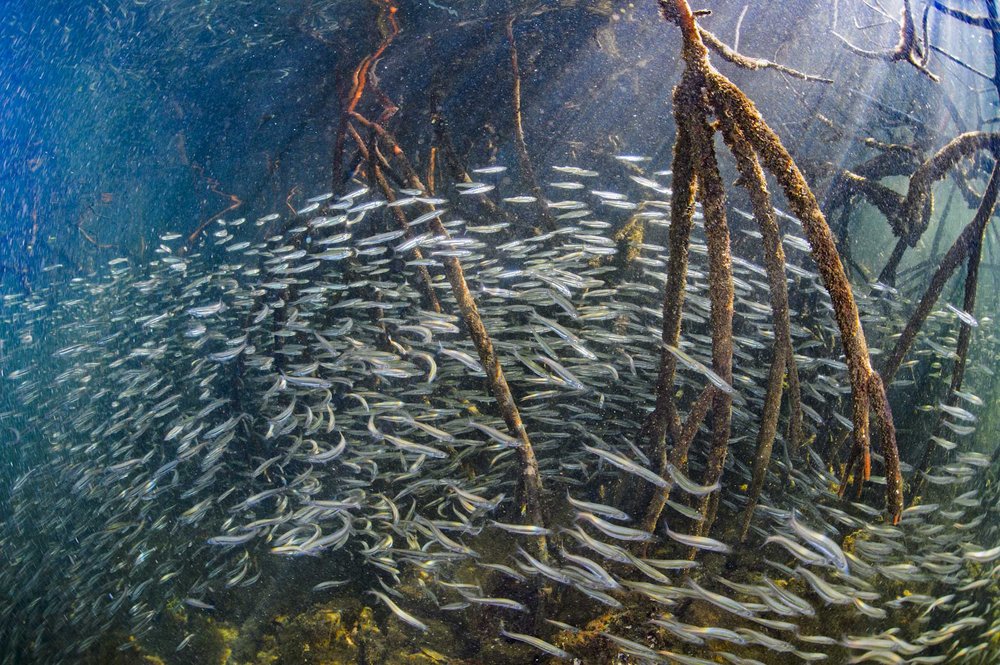
New study reveals mangroves in the Galapagos Islands are key ecosystems to a variety of fish species
Researchers from the Charles Darwin Foundation (CDF) and the Scripps Institution of Oceanography of the University of California, San Diego, together with the Galapagos National Park Directorate (GNPD), revealed the results of the first archipelago-wide study about fish diversity and abundance in mangrove ecosystems of the Galapagos Islands. It is well known that mangroves provide ideal habitat to fish throughout their life cycle, including during their juvenile stage. Mangroves in the Galapagos are no exception and are home to a great variety of fish species, some of which have local socio-economic importance.
To describe the diversity and abundance of fish communities that live among mangrove roots, researchers sampled 28 mangrove bays across islands of the archipelago using a combination of two sampling methods, baited remote underwater stereo-video stations (s-BRUVS) and underwater visual censuses. Scientists registered over 35,000 fish belonging to 92 species. At least 30 of the species identified, such as snappers and the sailfin grouper, are of importance to local artisanal fisheries. Several species of sharks and rays were also found in mangrove areas, which are charismatic species that have great importance to the local tourism industry.
But mangroves do more than just provide important habitat to fish, they also provide a variety of ecosystem services, including carbon sequestration and coastal protection. In another study led by CDF scientists published in 2019 , it was estimated that mangroves provide $62 million in ecosystems services per year to the tourism industry in the Galapagos and contribute over $900,000 every year to the local artisanal fisheries.

Denisse Fierro Arcos, marine scientist at the Charles Darwin Foundation and lead author said: “Thanks to this study we can conclude that mangroves not only play an important ecological role in local marine ecosystems, but they are also of great socio-economic importance to the human communities living in the Galapagos Islands, so we must ensure their long-term protection so the resources they provide can continue to be used in a sustainable manner.”

The Galapagos are the only volcanic islands in the Eastern Pacific where mangroves occur naturally. Scientists at the CDF used satellite imagery to map the distribution of these trees across the archipelago, and they estimated that mangroves are present in about a third of all coastal areas. Even though mangroves are relatively widespread, there was limited information about the fish species that depend on them, and their role as nursery areas for fish species of socio-economic interest. Previous work on mangroves in the Galapagos has focused largely on the inhabited islands of the archipelago, or on a subset of species. This study builds on this previous work to further our understanding of the importance of these habitats, and help inform the development of strategies and policy that can more effectively protect these areas.
“During their juvenile stage, fishes of several species, including young sharks, are vulnerable to become lunch for a larger predator. The complex mangrove root systems not only provide an excellent hiding place for these baby fishes, but also plenty of food during this critical stage of their life cycle” states Dr. Pelayo Salinas de León, senior scientist at FCD and coordinator of this study.

Despite their ecological and socio-economic importance, only 5% of mangroves are fully protected against extractive activities under the 2001 zoning plan of the Galapagos Marine Reserve. “The level of protection given to mangroves must be re-evaluated when new zoning plans are drafted to ensure these habitats receive an appropriate level of protection that will allow them to continue supporting the local tourism industry and artisanal fisheries," adds Fierro Arcos.
Results of this study were published in volume 664 of Marine Ecology Progress Series, which can be accessed through this link: https://doi.org/10.3354/meps13628. This research was made possible through the generous support of the Helmsley Charitable Trust, the Gordon and Betty Moore Foundation and the Save Our Seas Foundation. For information in Spanish, please contact the lead author of the study https://orcid.org/0000-0002-5039-6272.





